With the recent popularity of high-quality personal video cameras, there has been a corresponding increase in the number of devices designed to help stabilize those cameras.
Three popular devices are the Steadicam vs Gimbal vs Glidecam. All three devices have their strengths and weaknesses, so choosing the right one for your needs is essential.
Steadicam
Steadicam is a mechanical technique for stabilizing the camera invented in 1975 and is still in use after 45 years. Because the Steadicam is based on inertia, it relies on a large weight to create a smooth motion. Besides supporting the camera, its sled can also handle the monitor and batteries.
Wearing a vest that distributes the weight on your shoulders and hips is required when using a Steadicam. The vest also has multiple springs that connect the camera to an arm that isolates your movement from the camera. Combined, these factors will give you a solid image despite your frequent activity.
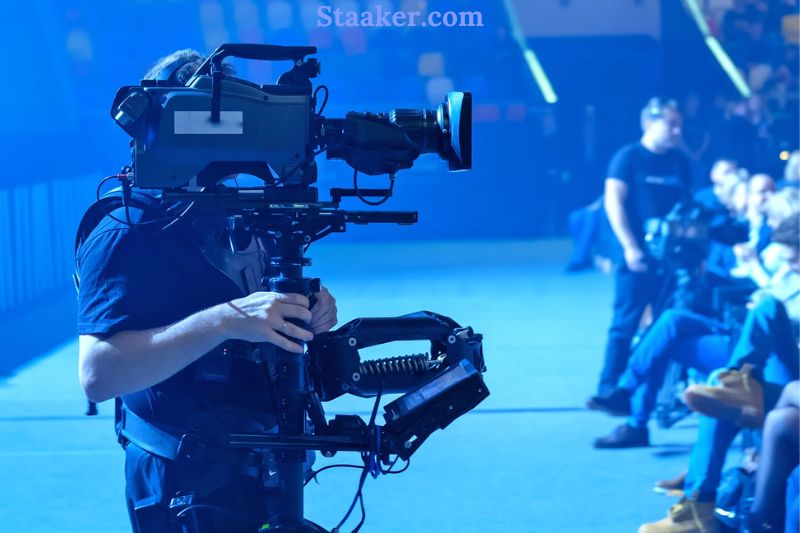
When walking with a Steadicam, the up-and-down movement of walking is neutralized, meaning it does not affect the camera or image, allowing you to walk freely and avoid the duck walk.
Another advantage of the Steadicam is that you can shoot for more extended periods with fewer breaks because the camera is not carried in one hand, and its weight is spread throughout the body, reducing tiredness.
Add in the fact that Steadicam is a mechanical solution, which means it doesn’t require batteries and won’t be affected by electronic difficulties such as firmware updates. If you’re not the cameraman, it’ll cost you anywhere from $1000 to $45,000 plus an operator.
Gimbal
Gimbal, unlike Steadicam, is an electronic solution for removing tremors from your footage. Movi was the first to employ the technology as a mobile camera stabilizer in 2013 after it was first used in helicopter mounts and crane arms.
A Gimbal’s electronic system is designed to measure the location of the camera hundreds of times per second. When there is a movement, the motors are charged to move in the opposite direction to counteract the shakiness.
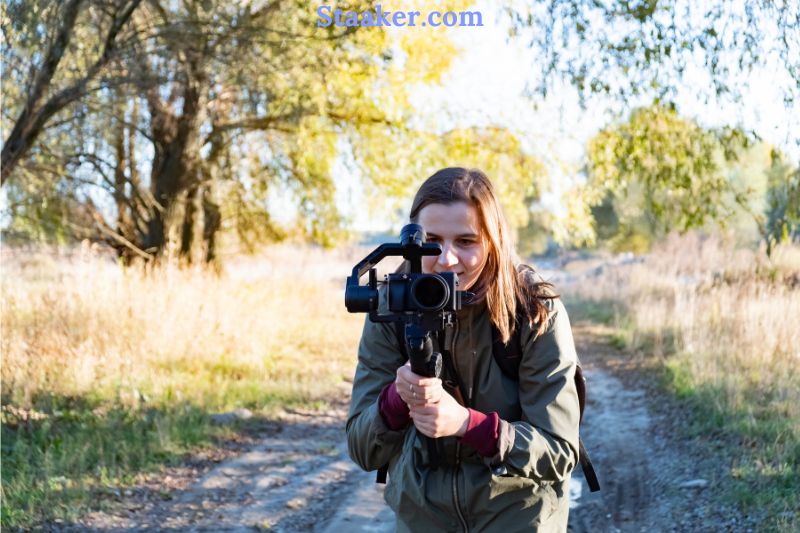
Gimbals are thought to be quicker to set up and use than Steadicams, but mastering both takes time and skill. Even though Gimbals are far less expensive than the rival, they still need to be significantly better to take the position of the Steadicam.
A Movi Pro or Ronin 2, for example, will set you back roughly $8,000 when you include batteries and mounts. So, if you’re looking for a quick and economical way to accomplish simple shots, Gimbals are the way to go.
2-axis vs 3-axis gimbals
Gimbals are usually two- or three-axis.
You can control tilting (up and down) and roll with a 2-axis gimbal (when you move the handle horizontally).
A 3-axis gimbal allows you to regulate the pan or side-to-side movement.
It is entirely up to you and the movement you require for a specific video session.
If you want to learn more about the difference between two devices, see this guide: 2 Axis Vs 3 Axis Gimbal: What’s The Difference?
How To Use a Gimbal for the Best Results
Parker Walbeck has created a fantastic movie that demonstrates how to properly use a gimbal and a glidecam, as well as the differences in the results they achieve when shooting the same scenario.
A little joystick controls a gimbal on the gimbal handle, and you may sometimes configure it using an app on your smartphone (great for hyper lapses).
Because a gimbal is handled this way, it often generates a more mechanical movement than a Glidecam, which allows you to manipulate the camera’s movement more hands-only.
You’ll need to practice using a gimbal if you don’t want your footage to look like it’s swimming.
When moving around, you must bend your knees, just like with a Glidecam, to avoid getting footage that bobs up and down.
Glidecam Stabilizers
Glidecam is a brand, but it’s become synonymous with camera stabilizers that use weights to balance cameras and don’t contain any electronics, similar to Steadicam.
A glidecam balances the camera on a short pole around a central axis with counterweights.
The more weights placed on the bottom to keep it steady, the heavier the camera and lens combo you wish to balance on top.
The central pole’s length concerning the handle is also modified to keep the camera stationary when moving.
Glidecams have no electronic elements and rely solely on gravity and the user’s movement to provide a smooth shot. That’s why doing it correctly takes some time.
How to Use a Glidecam-Type Stabilizer for Best Results
Holding the handle in one hand and carefully adjusting the angle and position of the center pole with the other, you utilize a Glidecam.
This is an excellent control method since it gives you an immediate sense of control over your Glidecam. This, in turn, enables faster pans and tilts than a gimbal would allow.
The absence of electrical motors has some advantages as well.
First and foremost, it does not run out of power.
Second, you don’t have to worry about sand or other small dirt particles getting stuck in your motors. That’s fantastic if you’ve taken your stabilizer to the desert or the beach.
Moving with your legs bent and avoiding bouncing up and down too much when using a Glidecam-type stabilizer is vital. You’ll receive the best outcomes this way.

Pros and Cons of Using a Glidecam
Stabilizers of the glidecam kind have a lot going for them. They don’t have any electronic components, for example. As a result, you won’t be stuck with a motor that doesn’t work.
They also don’t require batteries or need to be recharged. As a result, you won’t have to worry about running out of battery in the middle of a crucial shot.
Steadicam vs Gimbal
Both are useful, and any critique offered here is intended to serve as a warning rather than exclusion. The genuinely complex feats are achievable only when combined with a full gimbal or, at the very least, an automatically leveled cage on a Steadicam.
But there’s a reason to be cautious, and it has nothing to do with the parallels and differences between Steadicams and gimbals.
Yes, a gimbal removes more instability than a Steadicam. Gimbals stabilize the direction the camera is pointing, not the actual location of the camera, which limits their ability to exploit parallax with very close objects without showing the bob and weave in their position. The main distinction is that gimbals operate automatically, but a Steadicam does not.
The basic Steadicam technique isn’t rocket science; it’s just enough to get a nice photo without a lot of panning, tilting, or running about. Almost anything more than that rapidly becomes a task that necessitates significant ongoing practice.
Steadicam requires a skilled operator, and it’s an all-or-nothing situation. There isn’t such a thing as a medium-level Steadicam operator. Yes, this is a problem: because of their simplicity, unskilled people may swiftly and readily use gimbals on very modest projects, giving them a terrible reputation.
People in that situation have let their zeal get the best of them and shoot hours of footage with perfectly level horizons and poor framing.
It is at least easy to split roles and handle the problem with a gimbal. One person can focus on moving the camera through the scene while another concentrates on guiding it in the appropriate direction with remote pan and tilt. Not that operating isn’t a difficult skill in and of itself, but it makes life a lot easier, or at least a lot faster, to learn to a usable level.
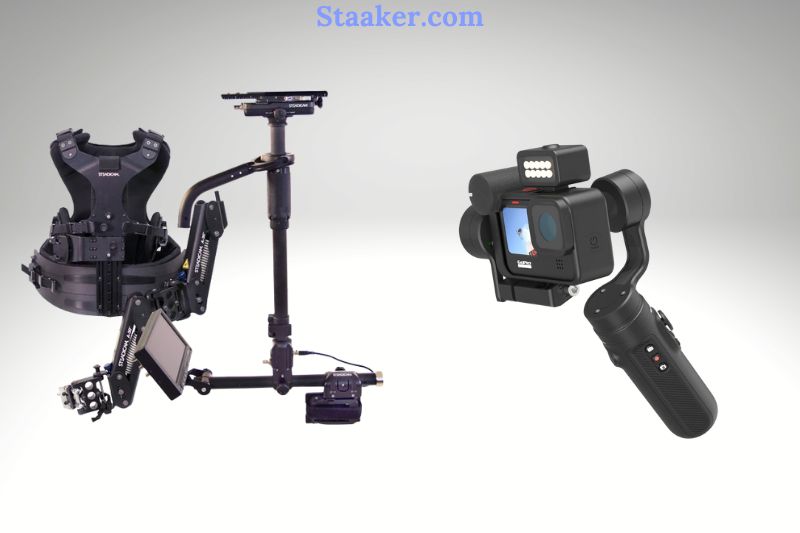
Meanwhile, the Steadicam operator must move the camera through the scene, frame it, and try to keep the horizon level, which gimbals do with ease. Maintaining a level horizon, preventing pan deviations while completing tilts (which require much more effort than pans but are controlled from the exact grip), and, of course, the massive, swinging weight are all challenges unique to Steadicam.
Steadicam operators can be their own worst enemies when they make exaggerated promises of all-day endurance when even the most massive person struggles to keep the same form at hour fifteen as they did at the start.
We could spend all day discussing the same challenges of both systems, but the fact that gimbals are more accessible – and they are – isn’t the topic we’re here to discuss.
The fundamental issue with Steadicam and gimbals isn’t one of technology; it’s one of creativity. Long, flowing, stabilized views have become associated with various types of camerawork, including live sports coverage and single-camera drama.
Sports OB is a test of endurance. Some of the world’s most skilled Steadicam operators have created a reputation for shooting walk-and-talks, in which people stroll around purposefully chatting. It’s a method of covering language that allows huge TV shows to quickly blow through dialogue in a visually appealing and quick-to-shoot manner.
It also reveals a significant quantity of information about the surroundings. Again, for anything other than the most influential productions, a good-looking result can be very reliant on merely displaying the most acceptable aspects of the site. The Steadicam and the Gimbal can be selective.
Still, they perform best on the massive standing sets of American television dramas or in beautiful locations where everything is illuminated, and the production is made to look amazing. Then you can stroll around with a decently wide lens for minutes, aiming the camera in every available direction. It’s effective.
Steadicam and gimbals can be lifesavers while traveling long distances or through rugged terrain. Stabilizers, on the other hand, perform best in uncommon circumstances. As a result, the focus is on what we’re going to shoot with it rather than what we’re going to shoot it with. Stabilization can be beneficial if you’re working on a high-end television show.
Consider carefully investing in a stabilized camera for a day for that tricky shot, whether you’re a student short film or even a low-budget television show. A handheld shot is preferable to a shaky stabilized shot.
Video
Gimbal vs Glidecam
Image Stabilization
On paper, the Glidecam can give approximately twice the gimbal payload, but we don’t consider this a significant benefit. The main goal of employing a stabilizer in videography is to provide image stabilization and increase the image quality of the camera as feasible.
The image stabilization provided by the gimbal still blows the image stabilization provided by the Glidecam out of the water if you use a camera rig weighing around 5 pounds on the gimbal that is almost banging on its maximum load capacity and the same camera rig on the Glidecam that is around half of its maximum load capacity.
If you need to carry those really big DSLR camera rigs, look into something like the Moza Air 2, which isn’t that much more expensive than the Glidecam HD-4000. The Air 2 has a similar maximum payload capacity, but it also has better image stabilization for your video footage while in use.
Panning
When it comes to panning, the Glidecam has a much more natural feel to it, and it helps you to capture that natural panning feel to your footage with minimal effort. However, any videographer worth their salt will quickly figure out how to manually operate their gimbal to achieve the same natural panning effect while simultaneously maintaining more excellent picture stabilization.
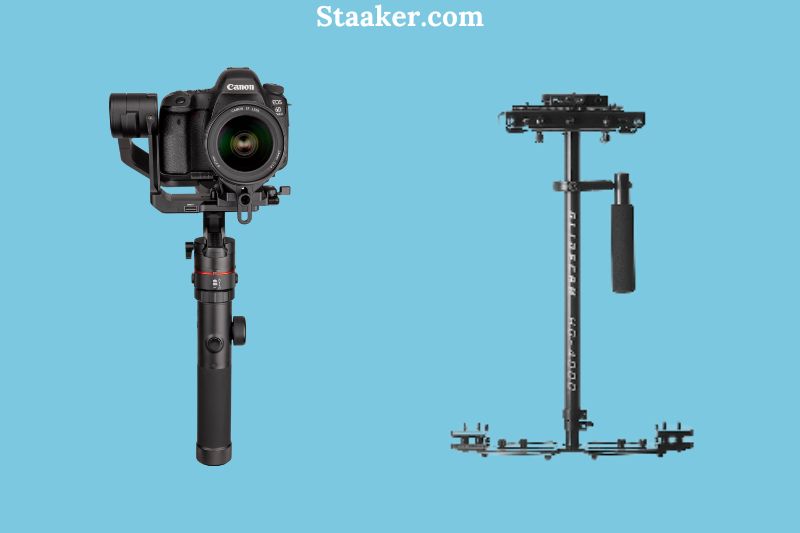
Now, this is a lot more difficult than it appears. If you’re a beginner filmmaker, you probably have more vital things to learn, such as essential to intermediate gimbal movements. However, if you’re an intermediate or professional videographer, you’ll most likely have mastered how to manually control your gimbal during pans for a more natural look to your movie.
Furthermore, most new three-axis gimbal stabilizers on the market now include numerous settings that can be used to assist you achieve the exact natural panning that a Glidecam can deliver straight out of the box.
Performance with Longer Lenses
As you surely know, some videography scenarios will necessitate using longer lenses to correctly capture the video footage you need with the most outstanding image quality possible.
This is another area where the gimbal has an immediate advantage over the Glidecam. Not only does the gimbal allow you to swiftly and efficiently rebalance your camera rig when you change lenses, but mounting a more extended or heavier lens on it does not affect how you use your smartphone.
Moving over to the Glidecam, depending on the model, recentering the Glidecam around the new lens you’ve had to attach to your camera can be a hassle and time-consuming. Furthermore, with some Glidecam models, you may need to adjust how you hold the handheld stabilizer to get the most outstanding performance out of it in your situation.
Although a Glidecam may operate with a longer or heavier lens, the gimbal outperforms it in terms of image stabilization, the convenience of use, and downtime after the lens change to calibrate your stabilizer.
Furthermore, as shown in the video at the beginning of the article, the performance of the Glidecam with heavier rigs can become a little more erratic.
The bobbling effect of Glidecam’s image stabilization, for example, can sometimes get a little worse, whereas the gimbal’s image stabilization is as silky smooth as ever. When you use 50mm lenses and more, the gimbal’s image quality advantage over the Glidecam becomes even more transparent, and the Glidecam is left for dust at 70mm and over.
Video
FAQs
Is there a camera stabilizer called Glidecam?
The GLIDECAM X-20 is a professional camera stabilization system for film and video cameras weighing between 10 and 20 pounds. The GLIDECAM X-20 System is the most complex and adaptable in its price range, combining modern engineering with precise machining.
What’s the difference between a stabilizer and a gimbal?
Gimbal contains more moving parts and requires a battery, charger, and other components. Although the stabilizer is easier to implement, both must be ‘balanced.’
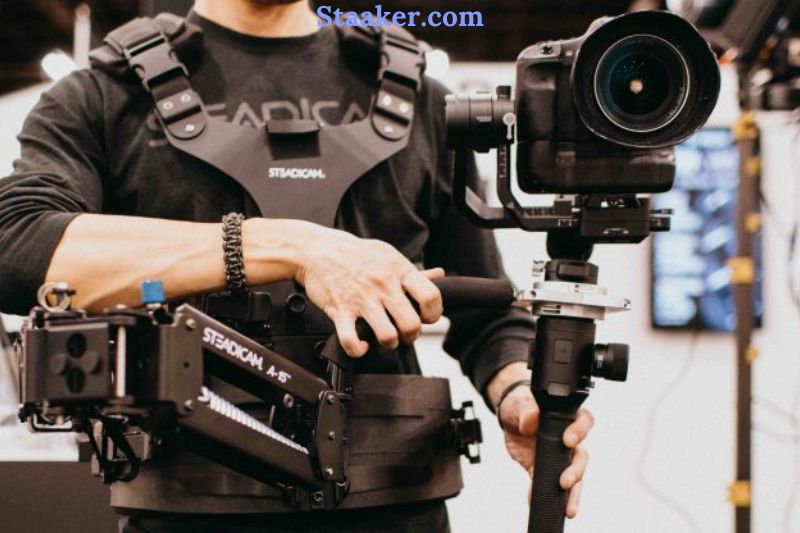
What is the weight of a glidecam?
Alone without Counter Weight Plates, the weight is 2.53 pounds. The average weight of each Custom Counter Weight Plate is. 272 pounds. 12 unique Counter Weight Plates are included with the Glidecam HD-2000.
Are batteries required for gimbals?
It is less expensive, but it is dependent on a smooth operation. Gimbals with three axes: Include a series of rotating gimbals. Electronic devices rely on battery life and charging time.
If you are considering many cameras, read this guide to have the best choice:
Conclusion
Ultimately, the choice of device depends on your specific needs and shooting style. If you’re starting, a Steadicam or gimbal may be the best option since they’re easier to use than a glidecam. If you’re more experienced, a glidecam may be the best option for you since it offers greater flexibility and control.
On the other hand, If you’re starting and don’t have any particular needs, a Steadicam or gimbal may be the best option. Thank you for reading!

